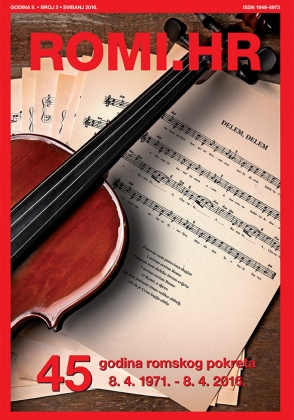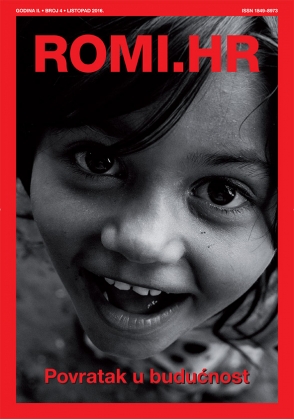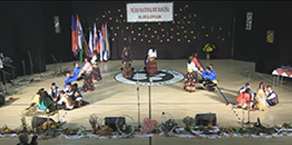Focus ROMI.HR
/The Ottoman Empire significantly impacted world history and shaped the destinies of various peoples under its rule, whether for extended or brief periods. The Ottoman empire included many communities, one of which was the Roma. The Roma, also had a significant presence in the Ottoman army.
The Ottoman Empire established “Military logistic organizations“ (“Geri hizmet kurumları”) to meet army demands, including transportation of soldiers, war equipment production, and maintaining discipline. These organizations included entities like the military within the societal structure, including the Roma under Liva-i Müselleman-i Çingâne (The Roma Müsellem Organization).
The Roma Müsellem Organization primarily consists of Müsellems (Muslims) and Yamaks (Helpers), who are under the authority of the Roma Sanjakbeyi (Head of Sanjak). Led by their serasker, the Müsellems reported for duty, participated in missions, and performed their tasks properly under the serasker's supervision.
A Müsellem was responsible for auxiliary military duties without receiving a salary from the State. Instead, they were allocated land, and the income from this land supported them. Their needs and expenses for campaigns were covered within their ocak ("ocak" is military units, with laws outlining the roles of officials and unit members, including both households and military units), with Yamak providing financial support. Müsellems did not receive wages from the treasury and were exempt from paying the ağnam tax (was an annual tax on sheep and goats in the Ottoman Empire) during their service year.
Assignment regulations were issued for the Müsellems who would be called to duty. The regulations clearly specified when the assigned Roma needed to be at their posts. They also detailed the penalties for failing to fulfill their duties. The Roma Müsellems would move with the army during land and sea campaigns.
Roma Müsellems were called to duty through the Roma Sanjakbeyi. They served for six months under their serasker and received certification upon completing their service. Due to their skills in metalwork, crafts, and performing difficult tasks, they were assigned various roles to meet the evolving needs of the Army and Navy. Their duties included mining, sheep herding, shipbuilding, transporting supplies, and repairing fortresses, castles, and mosques. The Roma military organization was primarily concentrated in the right wing (territorial) of Rumeli. Although less militarily active than the central wing, the right wing was vital for supplying wheat, meat, and salt to Istanbul. Roma handled transportation and portering, and served as butchers when needed. Outside of campaigns, they worked in nearby areas in Rumeli, including mining in Semendire Sanjak, repairing Bender Fortress and Sultan Selim Han Mosque in Edirne, and shipbuilding in Midye.
Roma Müsellems had to fulfill their duties and attend roll calls; missing them was considered neglect and deemed a crime. For Roma müsellems, reluctance to perform duties, tardiness, returning without completing assignments, abandoning duties, and skipping roll calls were considered crimes. The state initially issued warnings, followed by penalties if ignored. In cases of neglect, penalties ranged from fines and hard labor to confiscation of produce and even death. Punishments were enforced by the serasker, sancakbeyi, and kadı. Serious military offenses, as well as theft, assault, and murder, were also punishable, with fines split between the sancakbeyi and serasker, while severe penalties like mutilation or death were administered by the sancakbeyi according to Sharia law.
In the Roma Organization, Yamaks financially supported the müsellems but did not participate in missions. They were responsible for providing funds to Müsellems for campaigns as specified by law and were exempt from certain taxes due to this duty. Yamaks paid 50 akçe to the müsellems during campaigns but made no payments otherwise. Initially, they were required to pay this amount regardless of campaigns, but this obligation was lifted after Sultan Bayezid II.
By the late 16th century, the Roma Organization lost its discipline and reliability. This decline mirrored the broader disintegration of various auxiliary institutions within the State, driven by economic, social, and cultural challenges. At the beginning of the 17th century, as the need for salaried soldiers proficient with firearms increased, timariot sipahis were gradually reassigned to auxiliary roles. This shift was part of a larger transformation within the Ottoman military. Consequently, the Roma Organization was disbanded. Their lands were partially converted into timar and zeamet lands, while others were integrated into the mukataa system (It is the renting out or temporary transfer of a land or income belonging to the state in return for a fee).
The Roma Müsellem Organization played an important role in helping the Ottoman Military. Even after it ended, the Roma's work in crafts, transport, and support left a lasting impact on the Empire's history.
 Back to Focus
Back to Focus

.jpeg)











